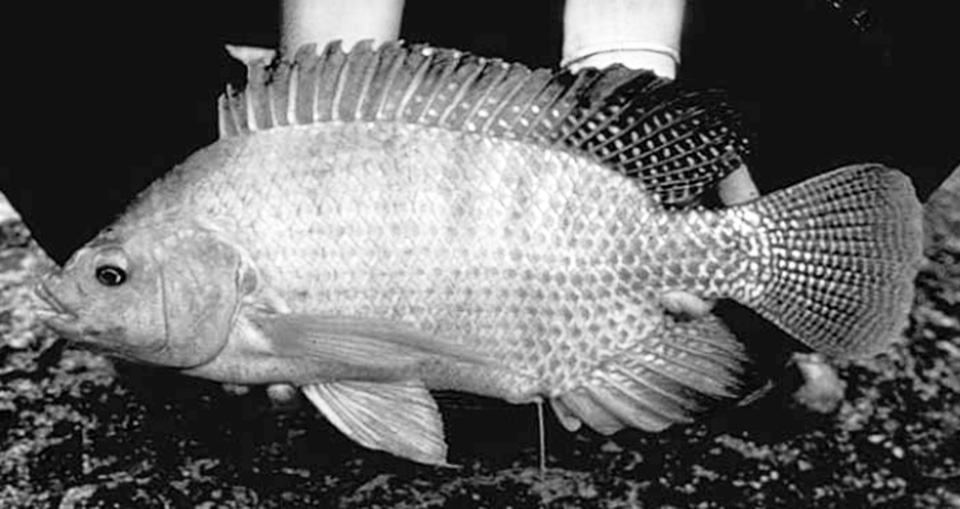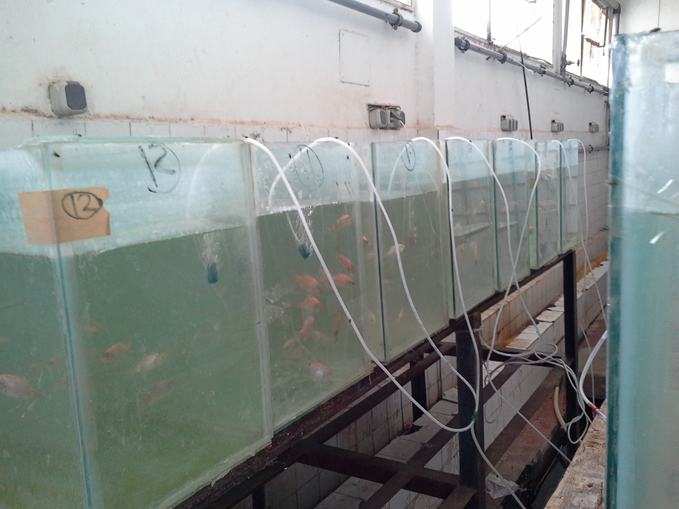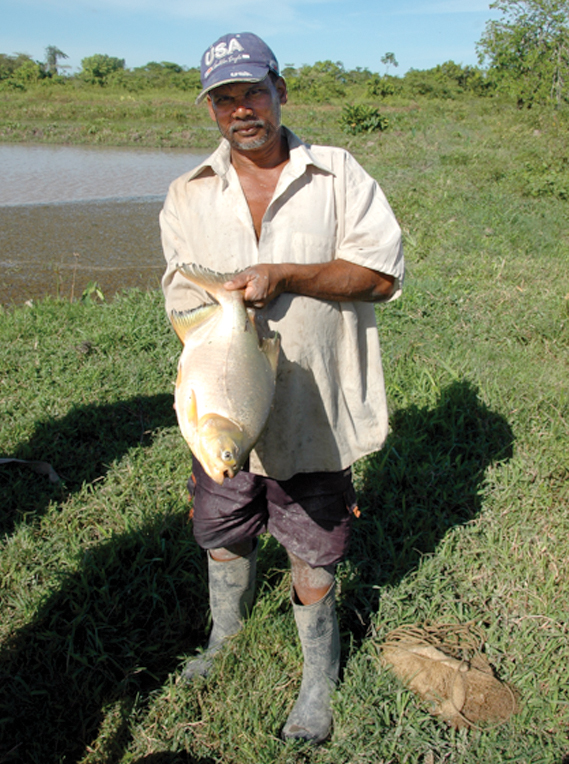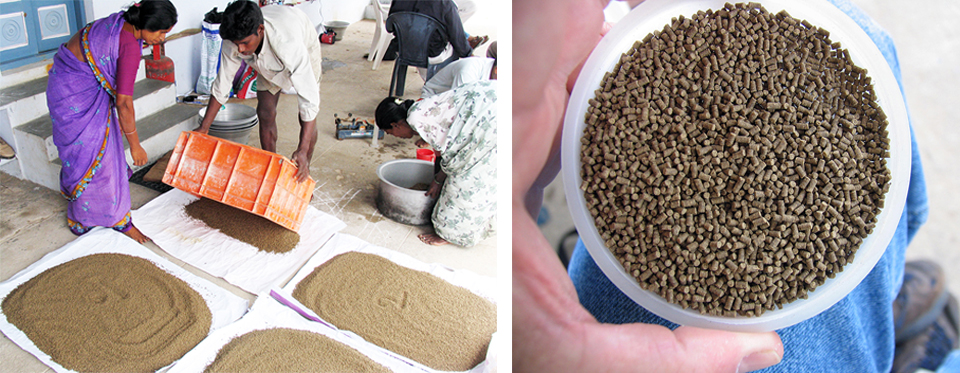YY males grew best in water of low salinity

A great dilemma facing culturists of Nile tilapia (Oreochromis niloticus) has been the unwanted offspring that result from stocking mixed-sex seed in grow-out ponds and other culture units. The high reproductive success of the tilapia becomes evident as the ponds fill with young, but insufficient natural food does not support acceptable growth in the originally stocked fish. At harvest, the stunted fish are of low market value.
Overcoming overreproduction
To overcome excessive pond populations due to the overreproductive nature of tilapia, the most effective strategy has been to produce all-male populations with zero or very low probability of offspring production. This has traditionally been achieved by three methods: hand sexing for males only, hormonal sex reversal, and breeding all-male hybrids.
Hand sexing is labor-intensive and therefore attractive in countries with inexpensive labor, but human error can be significant. Hormonal sex reversal is considered very efficient, with a high percentage of males produced at relatively low cost. New breeding programs breed not only for all males but also faster-growing offspring.
Adaptable fish
Nile tilapia are euryhaline fish, which adapt and grow satisfactorily within a salinity range of 0 to 15 ppt. Beyond this value, growth typically decreases, disease increases, and spawning performance and larval growth diminish.
As tilapia make inroads into world markets as premium food fish and demonstrate their adaptability for culture in diverse tropical environments, it is also important to test their responses in nontraditional environments.
Nicaragua study
A recent study by the author at Ave Maria College of the Americas in San Marcos, Carazo, Nicaragua, compared the growth and survival at different salinity levels of “super male” (YY) tilapia with normal sex O. niloticus (50 percent genotypic males per 50 percent genotypic females) reversed to 100 percent phenotypic males.
The super males were obtained from Louisiana, USA, while the androgen-fed, sex-reversed males were an Ivory Coast strain obtained from Managua, Nicaragua. At 5 to 10 grams average weight, the fish were stocked in 21, 200-liter outdoor plastic barrels with 3 replicates per treatment at a density of 10 fish per barrel and reared for 45 days.
Water temperature during the study ranged 23 to 28 degrees-C. Most days were cloudy, with low wind speed, typical of the predominantly rainy season. Water consisted of a mixture of municipal freshwater with 180 milligram per liter total alkalinity and 120 milligram per liter total hardness, and 35 ppt salinity seawater from a nearby Pacific Ocean beach. Fish were acclimated at the rate of 1 ppt per day for 0 to 15 ppt salinity, and 0.5 ppt per day for the 15 to 20 ppt and 20 to 25 ppt salinity adaptations.
The fish were fed a 32 percent-protein commercial tilapia diet daily. Water was exchanged daily at 5 percent unit volume. The culture unit infrastructure and feed used in the study were provided by Escudos del Caribe, SA.
Growth and survival
Survival ranged 70 to 100 percent, with no relation to salinity level. The growth of the YY males was much greater than the sex-reversed males at 0 ppt salinity, slightly greater at 20 ppt, and the same at 15 ppt salinity. The growth of the sex-reversed males was essentially the same at all test levels, while YY males grew best at 0 ppt, less at 20 ppt salinity, and least at 15 ppt. YY growth was low at the highest salinity tested (25 ppt), but not less than at 15 ppt.
Variation in individual fish size at harvest was notably greater in YY males than the hormone-reversed males. A small number of YYs never grew more than 9 to 12 grams, while the majority grew to 60 to 133 grams in size. The great majority of harvested sex-reversed males ranged 15 to 80 grams in size.
Hughes, Growth of Nile tilapia, Table 1
| Male Fish Type | Salinity (ppt) | Fish Growth (g/fish/day) |
|---|---|---|
| YY | 0 | 0.52 |
| Hormone-reversed | 0 | 0.33 |
| YY | 15 | 0.35 |
| Hormone-reversed | 15 | 0.34 |
| YY | 20 | 0.46 |
| Hormone-reversed | 20 | 0.32 |
| YY | 25 | 0.38 |
Conclusion
In a study that compared the performance of YY super male tilapia and fish sex-reversed by hormones, the YY males grew best in water of low salinity and as well as or better than the hormone-treated males at the three salinities tested.
The largest individual YY males harvested were 66 percent larger than the largest males sex-reversed by hormones, while a significantly large number of YY males were quite small at harvest. More work is believed necessary to select for YY seedstock with reduced variation in growth.
(Editor’s Note: This article was originally published in the August 2004 print edition of the Global Aquaculture Advocate.)
Now that you've reached the end of the article ...
… please consider supporting GSA’s mission to advance responsible seafood practices through education, advocacy and third-party assurances. The Advocate aims to document the evolution of responsible seafood practices and share the expansive knowledge of our vast network of contributors.
By becoming a Global Seafood Alliance member, you’re ensuring that all of the pre-competitive work we do through member benefits, resources and events can continue. Individual membership costs just $50 a year.
Not a GSA member? Join us.
Author
-
David G. Hughes, Ph.D.
Departments of Aquaculture and Agri/Aquabusiness
Ave Maria College of the Americas
San Marcos, Carazo, Nicaragua[105,110,46,117,100,101,46,97,105,114,97,109,101,118,97,64,115,101,104,103,117,104,100]
Tagged With
Related Posts

Health & Welfare
Applied commercial breeding program for Nile tilapia in Egypt
A major goal of selective breeding program for Nile tilapia (Oreochromis niloticus) in Egypt is to select for fillet color and fillet weight in response to consumer preferences.

Health & Welfare
10 paths to low productivity and profitability with tilapia in sub-Saharan Africa
Tilapia culture in sub-Saharan Africa suffers from low productivity and profitability. A comprehensive management approach is needed to address the root causes.

Health & Welfare
A look at aquaculture in Guyana
With its large quantities of water and little industry to pollute it, Guyana has the potential to become a greater player in global aquaculture.

Aquafeeds
A look at India’s fish feed industry
India's fish-farming industry makes limited use of modern feeds, providing potential for the feed sector to grow. Commercial feeds are predominantly used for pangasius farming, followed by a rising popularity in carp culture.


